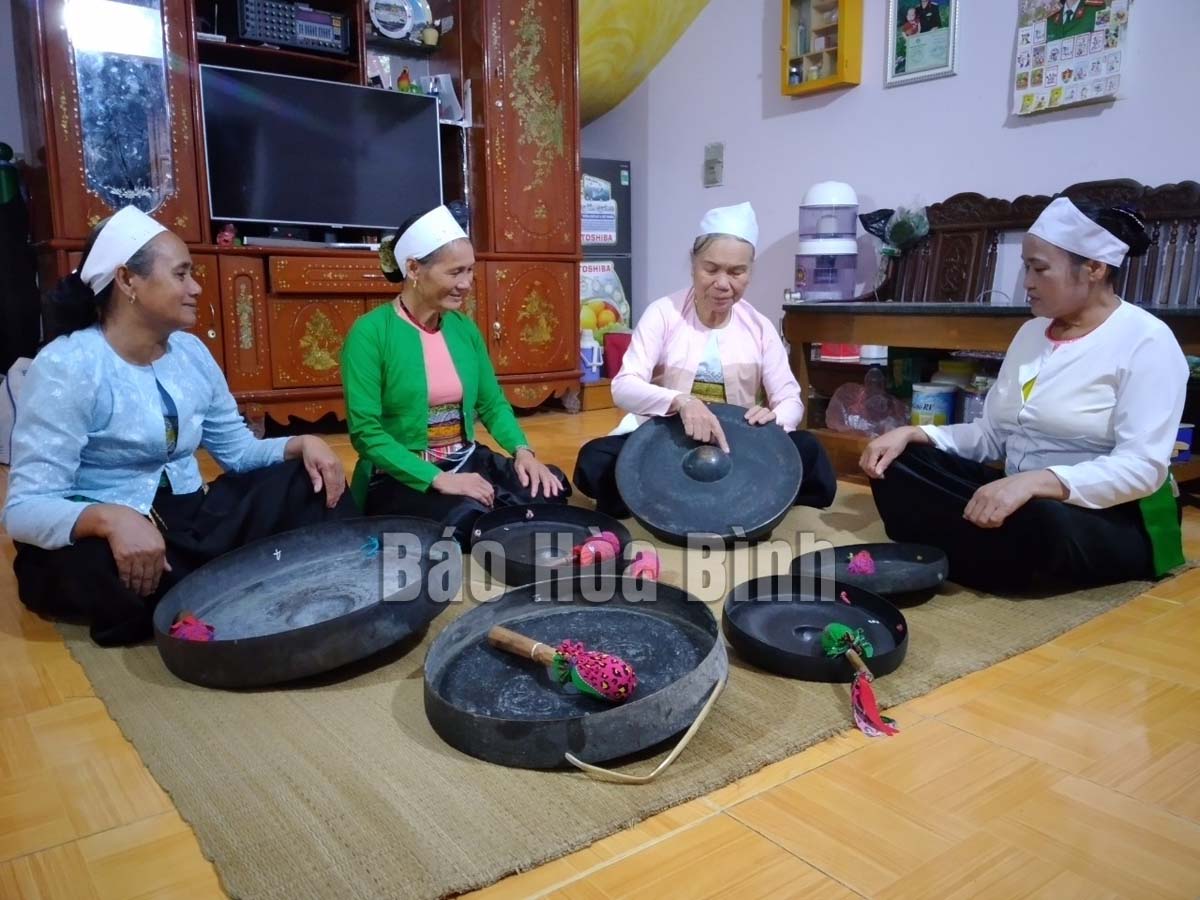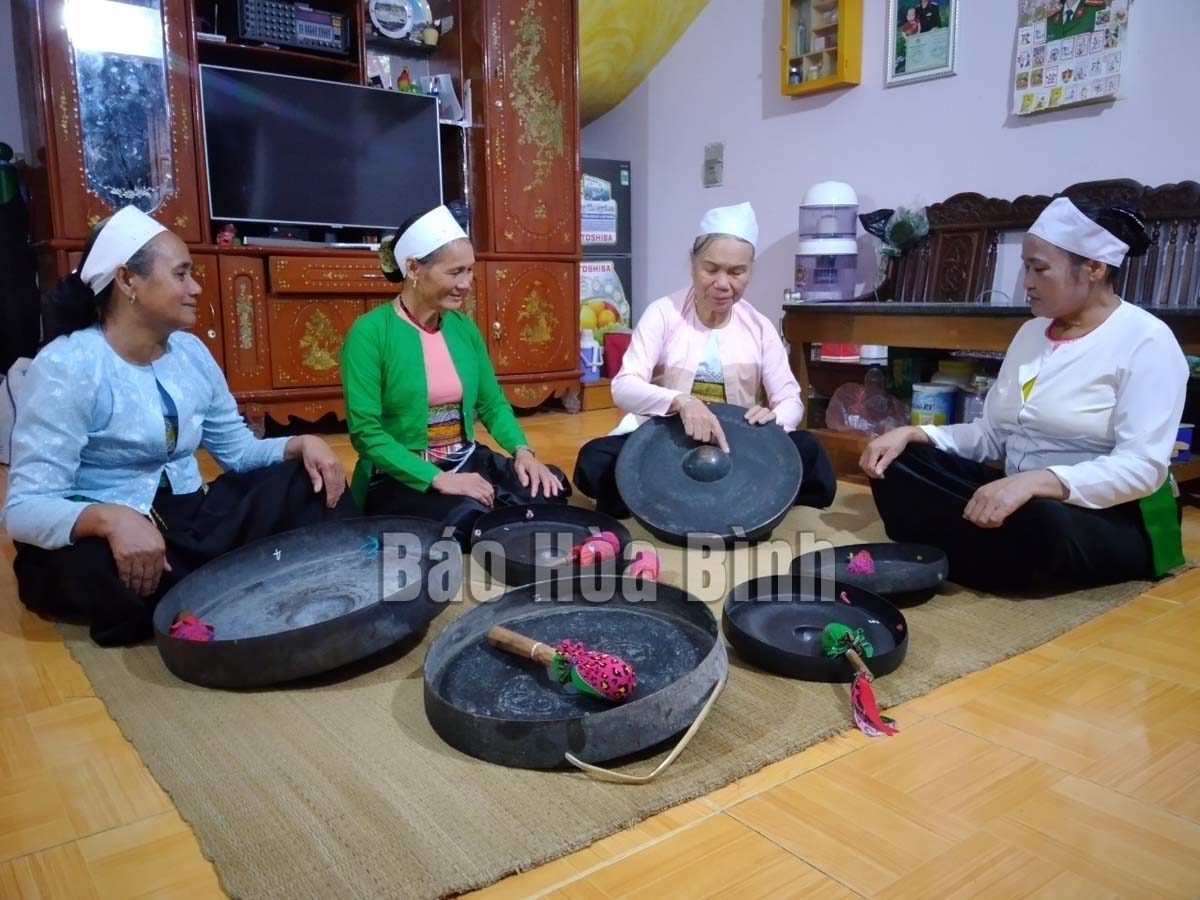
(HBO) - In 2016, the gongs of the Muong ethnic group were honoured as national intangible cultural heritage. Through ups and downs, they have been respectfully preserved and affirmed a special position in the cultural life of people in the Hoa Binh.
Artisan Nguyen Thi Hinh (second
right), Lam Son commune (Luong Son) teaches Muong gongs to women in the area.
According to statistics, the province houses
about 10,000 Muong gongs. Fortunately, in recent years, the instruments have
been treasured by local families as a sacred and precious object in the house.
Many young people, even elementary and junior high school students, also know
how to play the gongs.
In order to promote the value of Muong gongs and
introduce them to domestic and international friends, in recent years, the
provincial centre for culture and cinema has opened classes teaching people in
homestay areas to play the instrument.
As a result, the tourist villages of Hien Luong,
Tien Phong, and Suoi Hoa communes have created their own imprints and
identities with gongs, attracting many tourists.
Meanwhile, Muong gong performance has become one
of the indispensable contents of local festivals at all levels. On the occasion
of the province's 125th founding anniversary, the performance of 1,000 people
from four Muong regions playing 1,000 gongs set a Guinness record. On Hoa
Binh’s 130th founding anniversary, the record was broken by a performance of
1,500 gongs.
Luu Huy Linh, Deputy Director of the provincial
Department of Culture, Sports and Tourism, said that for the Muong people in
Hoa Binh, gongs are not just a musical instrument but have become an
indispensable cultural and spiritual value in their community life.
According to Linh, the local Muong ethnic group
currently has nearly 40 major festivals, 90 percent of which employ gong music.
Recently, Muong gong art has also been included in major political and cultural
events of the province in a unique way, leaving a deep impression on locals and
tourists at home and abroad. Many families have even bought 1-2 sets of gongs
to use and hang them in solemn positions in the house as a proof of love and
pride for the national cultural identity./.
With an increasingly vibrant and widespread emulation movement aimed at building cultured residential areas and cultured families, Yen Thuy District has been making steady progress toward improving both the material and spiritual well-being of its people, while fostering a civilized, prosperous, beautiful, and progressive community.
Once lacking recreational spaces and community facilities, Residential Group 2 in Quynh Lam Ward (Hoa Binh City) has recently received attention for the construction of a new, spacious, and fully equipped cultural house. The project followed the model of state support combined with public contributions in both labor and funding.
The "All people unite to build cultural life" movement, which has been effectively integrated with Kim Boi district’s socio-economic development goals, is fostering a lively spirit of emulation across local residential areas, hamlets, villages, public agencies, and enterprises. In addition, through the initiative, traditional cultural values are being preserved and promoted, while community solidarity and mutual support in poverty reduction and economic development are being strengthened.
A working delegation of the Hoa Binh provincial People’s Committee led by its Permanent Vice Chairman Nguyen Van Toan on June 11 inspected the progress of a project to build the Mo Muong Cultural Heritage Conservation Space linked to tourism services in Hop Phong commune, Cao Phong district.
Born and growing in the heroic land of Muong Dong, Dinh Thi Kieu Dung, a resident in Bo town of Kim Boi district, in her childhood was nurtured by the sweet lullabies of her grandmother and mother. These melodies deeply imprinted on her soul, becoming an inseparable part of her love for her ethnic group's culture. For over 20 years, this love for her hometown has driven Dung to research, collect, and pass down the cultural values of the Muong people to future generations.
In the final days of May, the Ethnic Art Troupe of Hoa Binh Province organized performances to serve the people in remote, mountainous, and particularly disadvantaged areas within the province. These were not just ordinary artistic shows, but they were the meaningful journeys aimed at spreading cultural values, enhancing the spiritual life of the people and contributing to the preservation of ethnic minority cultural identities.



